
Chapter 1: Prehistoric Art
Key Notes
Time Period
Paleolithic Art : 30,000–8000 B.C.E.
Neolithic Art : 8000–3000 B.C.E.
Culture, beliefs, and physical settings
Prehistoric art existed before writing.
Prehistoric art has been affected by climate change.
Prehistoric art can be seen in practical and ritual objects.
Prehistoric art shows an awareness of everything from cosmic phenomena to the commonplace.
Art-making
The oldest objects are African or Asian.
The first art forms appear as rock paintings, geometric patterns, human and animal motifs, and architectural monuments.
Ceramics are first produced in Asia.
The people of the Pacific are migrants from Asia, who bring ceramic-making techniques with them.
European cave paintings and megalithic monuments indicate a strong tradition of rituals.
Early American objects use natural materials, like bone or clay, to create ritual objects.
Similarities with Asian shamanic religious practices can be found in ritual ancient American objects.
Art history
Scientific dating of objects has shed light on the use of prehistoric objects.
Archaeology increases our understanding of prehistoric art.
Archaeology: the scientific study of ancient people and cultures principally revealed through excavation
Basic art historical methods can be used to understand prehistoric art, but our knowledge increases with findings made in other fields.
Prehistoric Background
Two Eras in Pre-History
Paleolithic Era: the Old Stone Age
People were hunter-gatherers
Neolithic Era: the New Stone Age
People cultivated the earth and raised livestock.
They lived in organized settlements, divided labor into occupations, and constructed the first homes.
People created before they could write, cipher math, cultivate crops, domesticate animals, invent the wheel, or use metal.
They painted before they had anything resembling clothes or lived in anything resembling a house.
The need to create is among the strongest of human impulses.
Prehistoric Sculpture
➼ Camelid Sacrum in the Shape of a Canine
Details
14,000–7000 B.C.E.
From Tequixquiac, Central Mexico
Located at the National Museum of Anthropology, Mexico City, Mexico
Preserved in 1870 in the Valley of Mexico.
Materials
Bone sculpture from a camel-like animal.
The bone has been worked to create the image of a dog or wolf.
Content
Carved to represent a mammal’s skull.
One natural form is used to take the shape of another.
The sacrum is the triangular bone at the base of a spine.
Context
Second skull: A Mesoamerican idea
The sacrum bone symbolizes the soul in some cultures, and for that reason it may have been chosen for this work.
Image

➼ Anthropomorphic Stele
Details
4th-millennium B.C.E.
From Arabian Peninsula
Mainly made of sandstone
Preserved in National Museum, Riyadh, Saudi Arabia
Stele: an upright stone slab used to mark a grave or a site
Form and Content
Anthropomorphic: having characteristics of the human form, although the form itself is not human.
Belted robe from which hangs a double-bladed knife or sword.
Double cords stretch diagonally across body with an awl unifying them.
Function: Religious or burial purpose, perhaps as a grave marker.
Context
One of the earliest known works of art from Arabia.
Found in an area that had extensive ancient trade routes.
Image
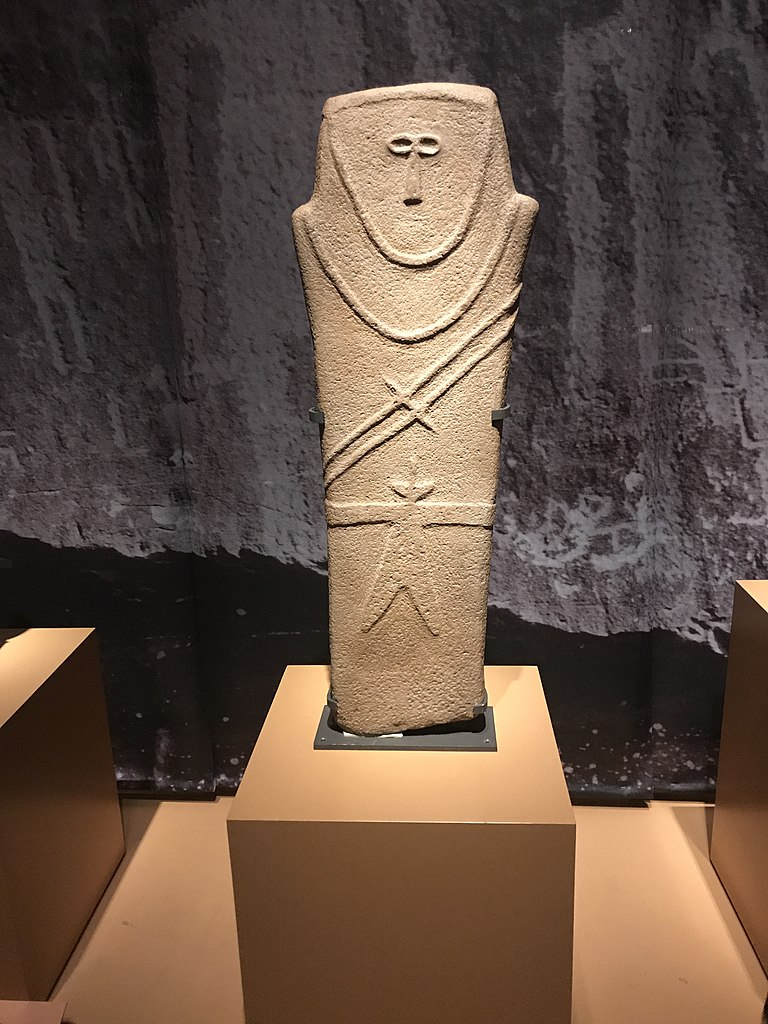
➼ Jade Cong
Details
c. 3300–2200 B.C.E.
From Liangzhu, China
Made from a carved jade
Preserved in Shanghai Museum, Shanghai, China
Cong: a tubular object with a circular hole cut into a square-like cross-section
Form
The circular hole is placed within a square.
Abstract designs; the main decoration is a face pattern, perhaps of spirits or deities.
Some have a haunting mask design in each of the four corners—with a bar-shaped mouth, raised oval eyes, sunken round pupils, and two bands that might indicate a headdress—which resembles the motif seen on Liangzhu jewelry.
Materials and Techniques
Jade is a very hard stone, sometimes carved using drills or saws.
The designs on congs may have been produced by rubbing sand.
The jades may have been heated to soften the stone, or ritually burned as part of the burial process.
Context
Jades appear in burials of people of high rank.
Jades are placed in burials around bodies; some are broken, and some show signs of intentional burning.
Jade religious objects are of various sizes and found in tombs, interred with the dead in elaborate rituals.
The Chinese linked jade with the virtues of durability, subtlety, and beauty.
Made in the Neolithic era in China.
Image
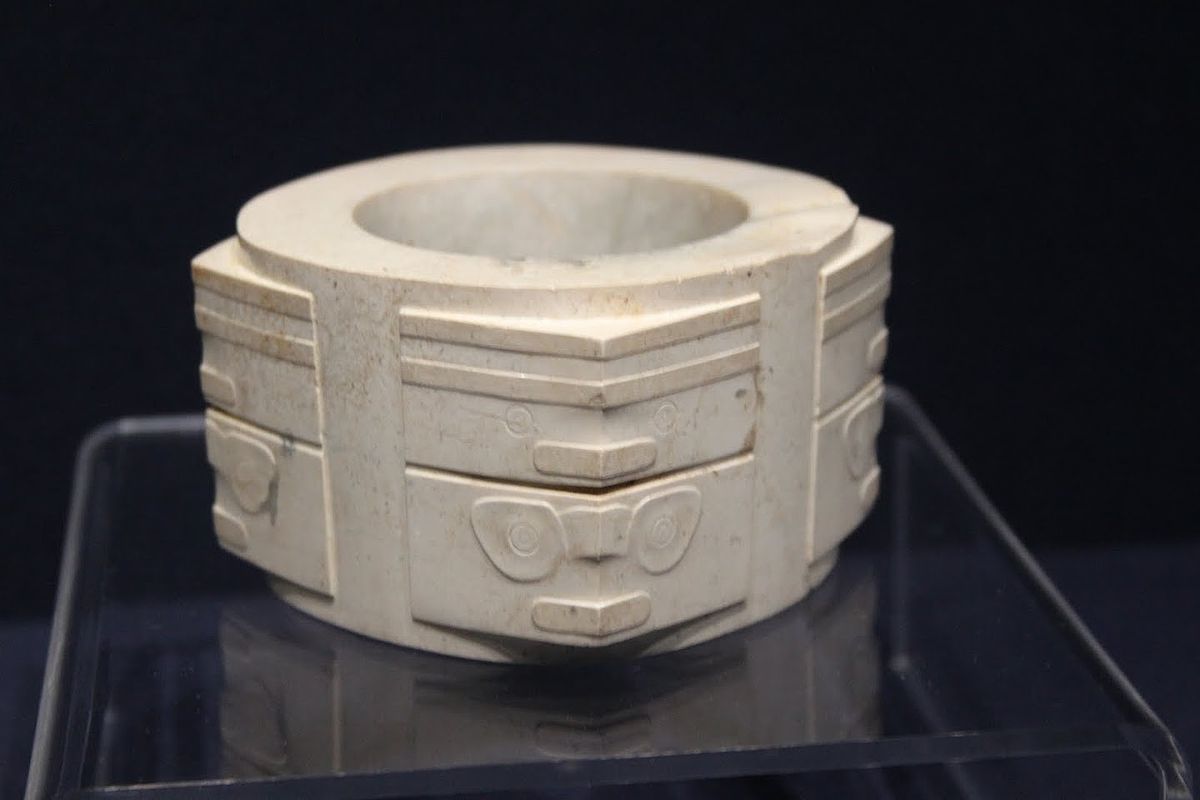
➼ The Ambum Stone
Details
c. 1500 B.C.E.
From Ambum Valley, Enga Province, Papua New Guinea
Made from graywacke
Preserved in National Gallery of Australia, Canberra
Form
Composite human/animal figure; perhaps an anteater head and a human body.
Ridgeline runs from nostrils, over the head, between the eyes, and between the shoulders.
Theories
Masked human.
Anteater embryo in a fetal position; anteaters thought of as significant because of their fat deposits.
May have been a pestle or related to tool making.
Perhaps had a ritual purpose; considered sacred; maybe a fertility symbol.
Maybe an embodiment of a spirit from the past, an ancestral spirit, or the Rainbow Serpent.
History
Stone Age work; artists used stone to carve stone.
Found in the Ambum Valley in Papua New Guinea.
When it was “found,” it was being used as a ritual object by the Enga people.
Sold to the Australian National Gallery.
Damaged in 2000 when it was on loan in France; it was dropped and smashed into three pieces and many shards; it has since been restored.
Image

➼ Tlatilco Female Figurine
Details
c. 1200–900 B.C.E.
From Central Mexico, site of Tlatilco
Made out of ceramic
Preserved in Princeton University Art Museum, Princeton, New Jersey
Form
Flipper-like arms, huge thighs, pronounced hips, narrow waists.
Unclothed except for jewelry; arms extending from body.
Diminished role of hands and feet.
Female figures show elaborate details of hairstyles, clothing, and body ornaments.
Technique: Made by hand; artists did not use molds.
Function: May have had a shamanistic function
Context and Interpretation
Some show deformities, including a female figure with two noses, two mouths, and three eyes, perhaps signifying a cluster of conjoined or Siamese twins and/or stillborn children.
Bifacial images and congenital defects may express duality.
Found in graves, and may have had a funerary context.
Image
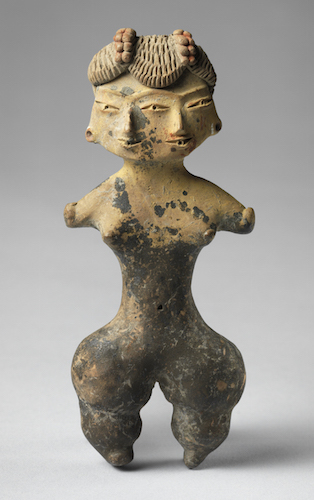
➼ Terra cotta fragment
Details
1000 B.C.E.
From Lapita, Reef Islands, Solomon Islands
Made from incised terra cotta
Preserved in University of Auckland, New Zealand
Form
Pacific art is characterized by the use of curved stamped patterns: dots, circles, hatching; may have been inspired by patterns on tattoos.
One of the oldest human faces in Oceanic art.
Materials
Lapita culture of the Solomon Islands is known for pottery.
Outlined forms: they used a comb-like tool to stamp designs onto the clay, known as dentate stamping.
Technique
Did not use potter’s wheel.
After pot was incised, a white coral lime was often applied to the surface to make the patterns more pronounced.
Tradition
Continuous tradition: some designs found on the pottery are used in modern Polynesian tattoos and tapas.
Image
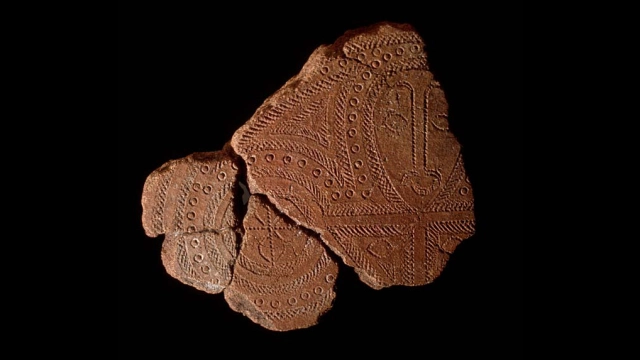
Prehistoric Paintings
➼ Apollo 11 Stones
Details
c. 25,500–25,300 B.C.E.
Painted using charcoal on stone,
Preserved in State Museum of Namibia, Windhoek, Namibia
Form
Animal seen in profile, typical of prehistoric painting.
Perhaps a composite animal rather than a particular specimen.
Materials
Done with charcoal.
Context
Some of the world’s oldest works of art, found in Wonderwerk Cave in Namibia.
Several stone fragments found.
Originally brought to the site from elsewhere.
Cave is the site of 100,000 years of human activity.
History
Named after the Apollo 11 moon landing in 1969, the year the cave was discovered.
Image
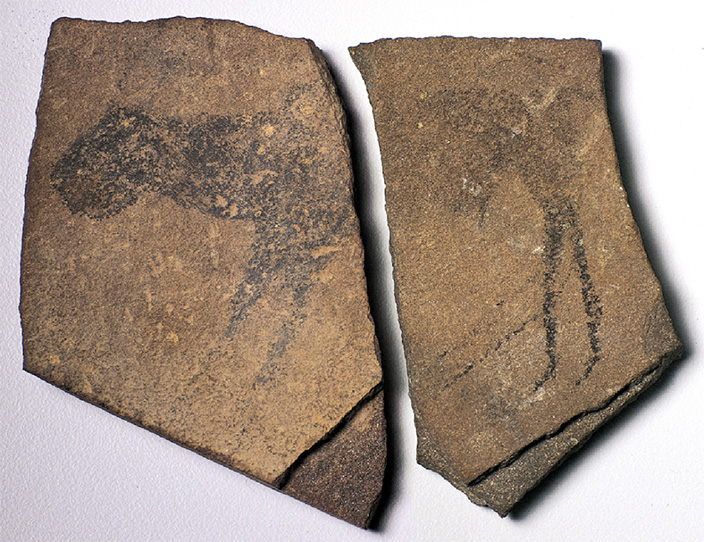
➼ Great Hall of the Bulls
Details
15,000–13,000 B.C.E.
From Paleolithic Europe
A rock painting,
Found in Lascaux, France
Content
650 paintings: most common animals are cows, bulls, horses, and deer.
Form
Bodies seen in profile; frontal or diagonal view of horns, eyes, and hooves; some animals appear pregnant.
Twisted perspective: many horns appear more frontal than the bodies.
Many overlapping figures.
Materials
Natural products were used to make paint: charcoal, iron ore, plants.
Walls were scraped to an even surface; paint colors were bound with animal fat; lamps lighted the interior of the caves.
No brushes have been found.
May have used mats of moss or hair as brushes.
Color could have been blown onto the surface by mouth or through a tube, like a hollow bone.
Context
Animals placed deep inside cave—some hundreds of feet from the entrance.
Evidence still visible of scaffolding erected to get to higher areas of the caves.
Negative handprints: are they signatures?
Caves were not dwellings, as prehistoric people led migratory lives following herds of animals; some evidence exists that people did seek shelter at the mouths of caves.
Theories
A traditional view is that they were painted to ensure a successful hunt.
Ancestral animal worship.
Represents narrative elements in stories or legends.
Shamanism: a religion based on the idea that the forces of nature can be contacted by intermediaries, called shamans, who go into a trance-like state to reach another state of consciousness.
History
Discovered in 1940; opened to the public after World War II.
Closed to the public in 1963 because of damage from human contact.
Replica of the caves opened adjacent to the original.
Image
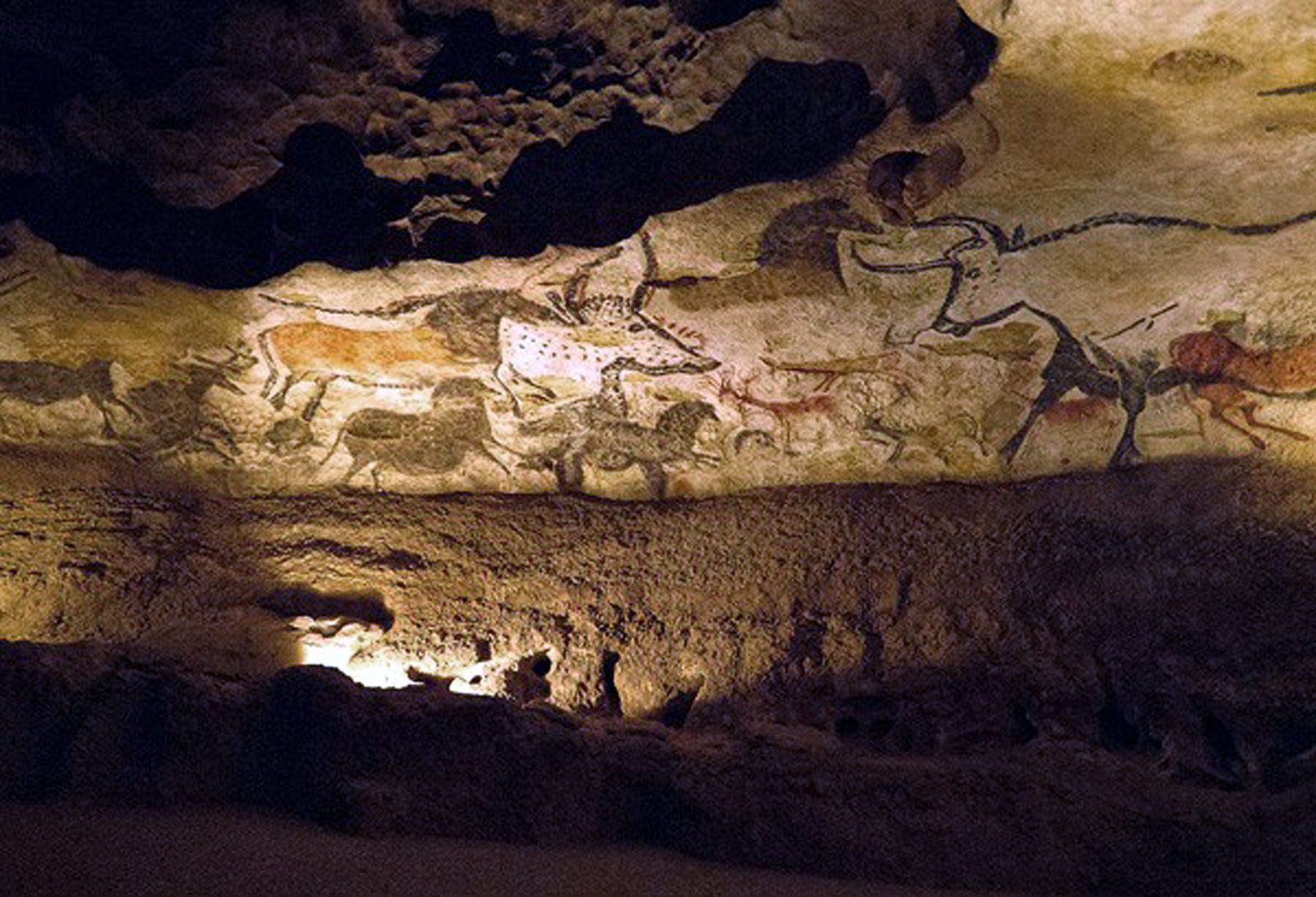
➼ Running Horned Woman
Details
6000–4000 B.C.E.
A pigment on rock,
Found in Tassili n’Ajjer, Algeria
Form
Composite view of the body.
Many drawings exist—some are naturalistic, some are abstract, some have Negroid features, and some have Caucasian features.
The female horned figure suggests attendance at a ritual ceremony.
Content
Depicts livestock, wildlife, and humans
Dots may reflect body paint applied for ritual or scarification; white patterns in symmetrical lines may reflect raffia garments.
Context
More than 15,000 drawings and engravings were found at this site.
At one time the area was grasslands; climate changes have turned it into a desert.
The entire site was probably painted by many different groups over large expanses of time.
Image
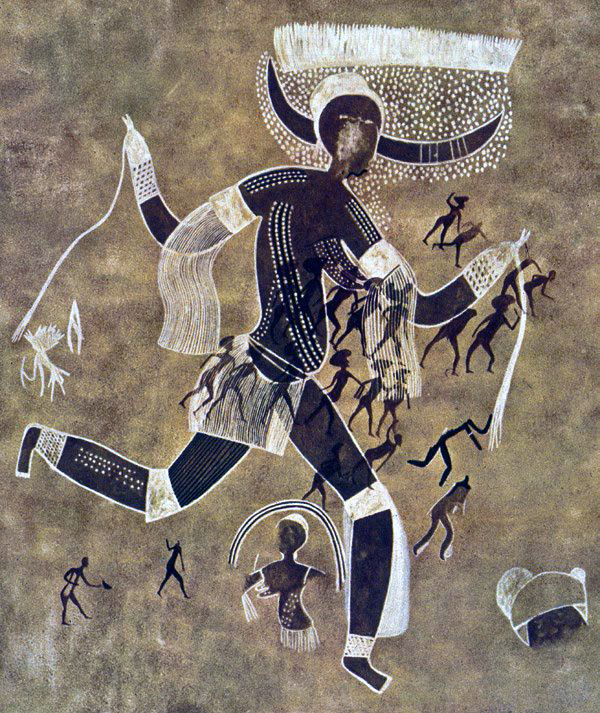
➼ Beaker with Ibex Motifs
Details
4200–3500 B.C.E.
From Susa, Iran
Painted terra cotta
Found in Louvre, Paris
Form and Content
Frieze of stylized aquatic birds on top, suggesting a flock of birds wading in a Mesopotamian river valley.
Below are stylized running dogs with long narrow bodies, perhaps hunting dogs.
The main scene shows an ibex with oversized abstract and stylized horns.
Stylized: a schematic, nonrealistic manner of representing the visible world and its contents, abstracted from the way that they appear in nature
Materials and Techniques
Probably made on a potter’s wheel, a technological advance; some suggest instead that it was handmade.
Thin pottery walls.
Context and Interpretation
In the middle of the horns is a clan symbol of family ownership; perhaps the image identifies the deceased as belonging to a particular group or family.
Found near a burial site, but not with human remains.
Found with hundreds of baskets, bowls, and metallic items.
Made in Susa, in southwestern Iran.
Image
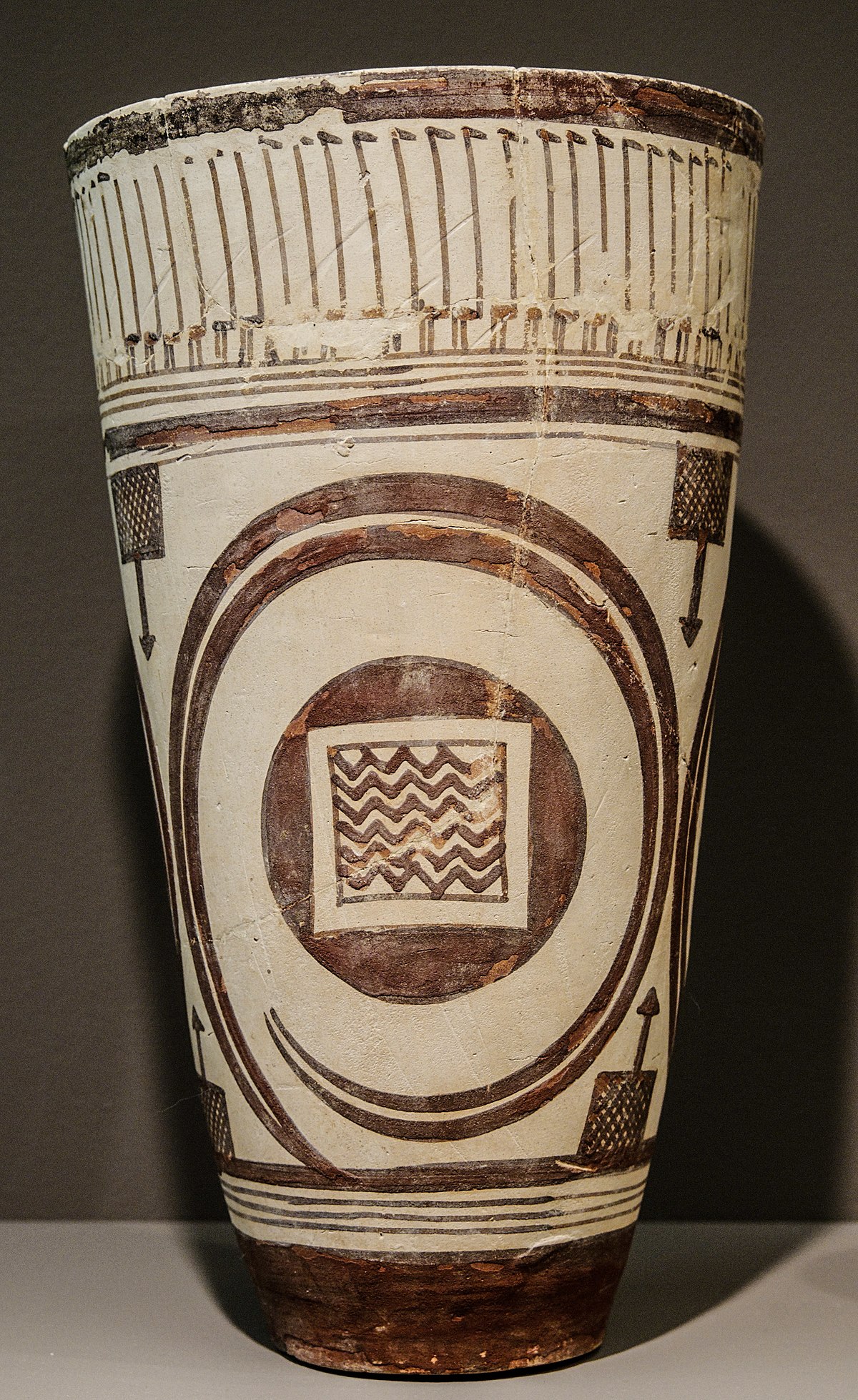
Prehistoric Architecture
Menhirs: Large individual stones, erected singularly or in long rows stretching into the distance.
Megaliths: a stone of great size used in the construction of a prehistoric structure
Henge: a Neolithic monument, characterized by a circular ground plan. Used for rituals and marking astronomical events
Lintel: a horizontal beam over an opening
Post and Lintel Architecture: The most fundamental type of architecture in history.
➼ Stonehenge
Details
c. 2500–1600 B.C.E.
Made out of sandstone, Neolithic Europe,
Found in Wiltshire, United Kingdom
Technique
Post-and-lintel building; lintels grooved in place by the mortise and tenon system of construction.
Mortise and tenon: a groove cut into stone or wood, called a mortise, that is shaped to receive a tenon, or projection, of the same dimensions
Large megaliths in the center are over 20 feet tall and form a horseshoe surrounding a central flat stone.
A central horseshoe is surrounded by lintel-connected megaliths.
Hundreds of unidentified stones surrounded the monument.
Builders lacked wheels and pulleys. Stones may have been transported on logs or a greased sleigh.
Context
Each stone weighs over 50 tons, reflecting the structure's intended permanence.
Some stones were imported from over 150 miles away, suggesting they were sacred.
History
Perhaps took 1,000 years to build; gradually redeveloped by succeeding generations.
Probably built in three phases:
First Phase: circular ditch 36 feet deep and 360 feet in diameter containing 56 pits called Aubrey Holes, named after John Aubrey who found them in the 18th century.
Today the holes are filled with chalk.
Second Phase: wooden structure, perhaps roofed.
The Aubrey Holes may have been used as cremation burials at this time.
Adult males were buried at these sites, generally, men who did not show a lifetime of hard labor, signifying it was a site for a select group of people.
Third Phase: stone construction.
Tradition
British Isles forests may have inspired wood circles.
Stone circles are still common in Britain, indicating Neolithic popularity.
Theories
As an observatory, it may predict eclipses and be oriented towards the summer and winter solstices.
According to a new theory, elite males were buried at Stonehenge.
An alternative theory suggests it was a healing site.
Image
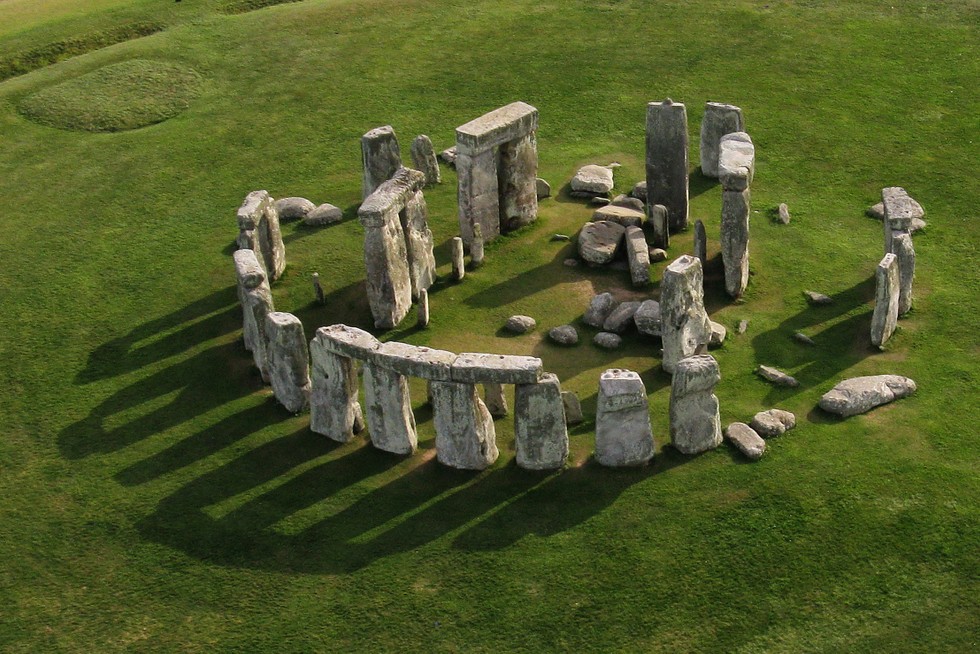
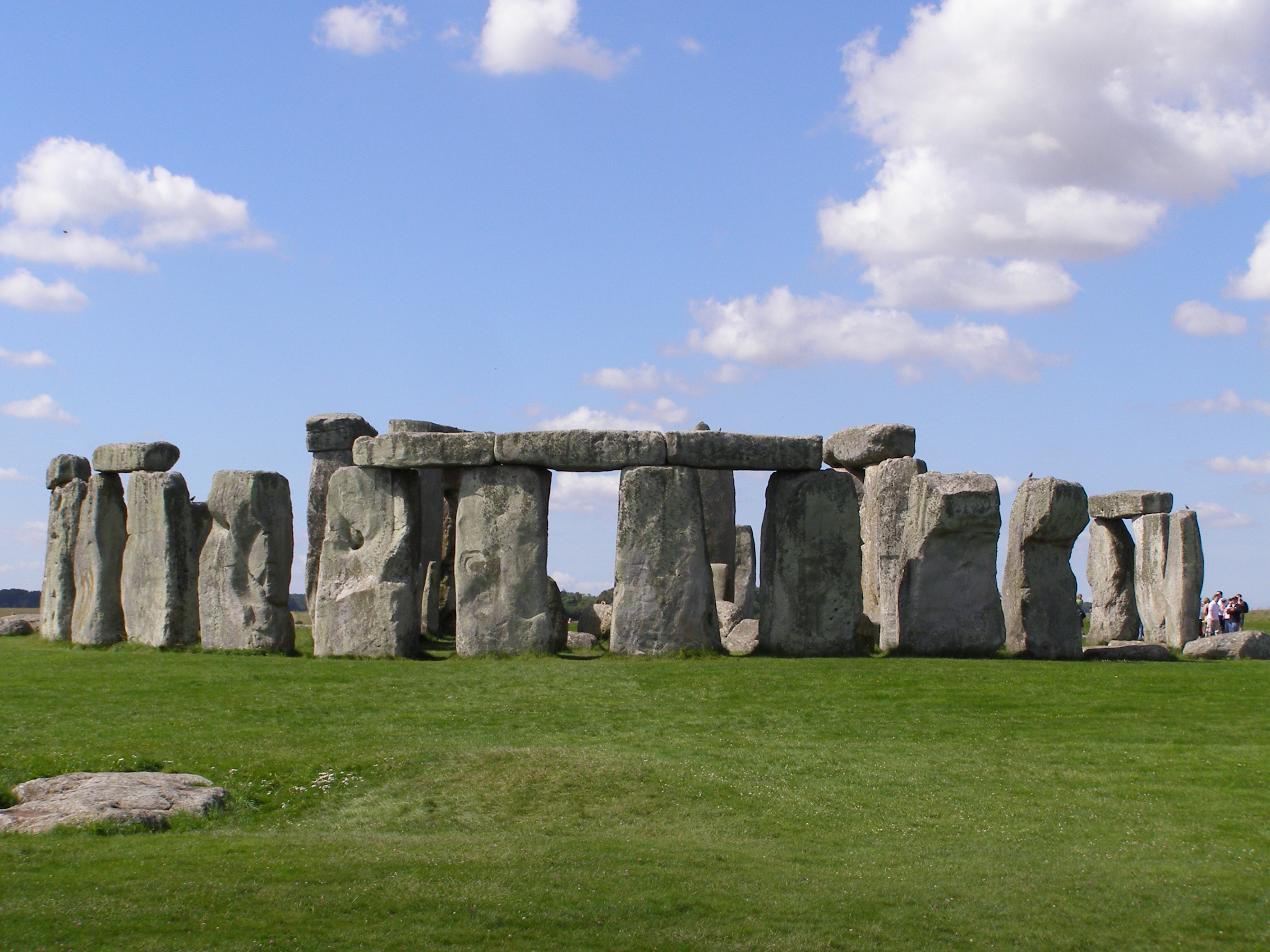
Chapter 1: Prehistoric Art
Key Notes
Time Period
Paleolithic Art : 30,000–8000 B.C.E.
Neolithic Art : 8000–3000 B.C.E.
Culture, beliefs, and physical settings
Prehistoric art existed before writing.
Prehistoric art has been affected by climate change.
Prehistoric art can be seen in practical and ritual objects.
Prehistoric art shows an awareness of everything from cosmic phenomena to the commonplace.
Art-making
The oldest objects are African or Asian.
The first art forms appear as rock paintings, geometric patterns, human and animal motifs, and architectural monuments.
Ceramics are first produced in Asia.
The people of the Pacific are migrants from Asia, who bring ceramic-making techniques with them.
European cave paintings and megalithic monuments indicate a strong tradition of rituals.
Early American objects use natural materials, like bone or clay, to create ritual objects.
Similarities with Asian shamanic religious practices can be found in ritual ancient American objects.
Art history
Scientific dating of objects has shed light on the use of prehistoric objects.
Archaeology increases our understanding of prehistoric art.
Archaeology: the scientific study of ancient people and cultures principally revealed through excavation
Basic art historical methods can be used to understand prehistoric art, but our knowledge increases with findings made in other fields.
Prehistoric Background
Two Eras in Pre-History
Paleolithic Era: the Old Stone Age
People were hunter-gatherers
Neolithic Era: the New Stone Age
People cultivated the earth and raised livestock.
They lived in organized settlements, divided labor into occupations, and constructed the first homes.
People created before they could write, cipher math, cultivate crops, domesticate animals, invent the wheel, or use metal.
They painted before they had anything resembling clothes or lived in anything resembling a house.
The need to create is among the strongest of human impulses.
Prehistoric Sculpture
➼ Camelid Sacrum in the Shape of a Canine
Details
14,000–7000 B.C.E.
From Tequixquiac, Central Mexico
Located at the National Museum of Anthropology, Mexico City, Mexico
Preserved in 1870 in the Valley of Mexico.
Materials
Bone sculpture from a camel-like animal.
The bone has been worked to create the image of a dog or wolf.
Content
Carved to represent a mammal’s skull.
One natural form is used to take the shape of another.
The sacrum is the triangular bone at the base of a spine.
Context
Second skull: A Mesoamerican idea
The sacrum bone symbolizes the soul in some cultures, and for that reason it may have been chosen for this work.
Image

➼ Anthropomorphic Stele
Details
4th-millennium B.C.E.
From Arabian Peninsula
Mainly made of sandstone
Preserved in National Museum, Riyadh, Saudi Arabia
Stele: an upright stone slab used to mark a grave or a site
Form and Content
Anthropomorphic: having characteristics of the human form, although the form itself is not human.
Belted robe from which hangs a double-bladed knife or sword.
Double cords stretch diagonally across body with an awl unifying them.
Function: Religious or burial purpose, perhaps as a grave marker.
Context
One of the earliest known works of art from Arabia.
Found in an area that had extensive ancient trade routes.
Image

➼ Jade Cong
Details
c. 3300–2200 B.C.E.
From Liangzhu, China
Made from a carved jade
Preserved in Shanghai Museum, Shanghai, China
Cong: a tubular object with a circular hole cut into a square-like cross-section
Form
The circular hole is placed within a square.
Abstract designs; the main decoration is a face pattern, perhaps of spirits or deities.
Some have a haunting mask design in each of the four corners—with a bar-shaped mouth, raised oval eyes, sunken round pupils, and two bands that might indicate a headdress—which resembles the motif seen on Liangzhu jewelry.
Materials and Techniques
Jade is a very hard stone, sometimes carved using drills or saws.
The designs on congs may have been produced by rubbing sand.
The jades may have been heated to soften the stone, or ritually burned as part of the burial process.
Context
Jades appear in burials of people of high rank.
Jades are placed in burials around bodies; some are broken, and some show signs of intentional burning.
Jade religious objects are of various sizes and found in tombs, interred with the dead in elaborate rituals.
The Chinese linked jade with the virtues of durability, subtlety, and beauty.
Made in the Neolithic era in China.
Image

➼ The Ambum Stone
Details
c. 1500 B.C.E.
From Ambum Valley, Enga Province, Papua New Guinea
Made from graywacke
Preserved in National Gallery of Australia, Canberra
Form
Composite human/animal figure; perhaps an anteater head and a human body.
Ridgeline runs from nostrils, over the head, between the eyes, and between the shoulders.
Theories
Masked human.
Anteater embryo in a fetal position; anteaters thought of as significant because of their fat deposits.
May have been a pestle or related to tool making.
Perhaps had a ritual purpose; considered sacred; maybe a fertility symbol.
Maybe an embodiment of a spirit from the past, an ancestral spirit, or the Rainbow Serpent.
History
Stone Age work; artists used stone to carve stone.
Found in the Ambum Valley in Papua New Guinea.
When it was “found,” it was being used as a ritual object by the Enga people.
Sold to the Australian National Gallery.
Damaged in 2000 when it was on loan in France; it was dropped and smashed into three pieces and many shards; it has since been restored.
Image

➼ Tlatilco Female Figurine
Details
c. 1200–900 B.C.E.
From Central Mexico, site of Tlatilco
Made out of ceramic
Preserved in Princeton University Art Museum, Princeton, New Jersey
Form
Flipper-like arms, huge thighs, pronounced hips, narrow waists.
Unclothed except for jewelry; arms extending from body.
Diminished role of hands and feet.
Female figures show elaborate details of hairstyles, clothing, and body ornaments.
Technique: Made by hand; artists did not use molds.
Function: May have had a shamanistic function
Context and Interpretation
Some show deformities, including a female figure with two noses, two mouths, and three eyes, perhaps signifying a cluster of conjoined or Siamese twins and/or stillborn children.
Bifacial images and congenital defects may express duality.
Found in graves, and may have had a funerary context.
Image

➼ Terra cotta fragment
Details
1000 B.C.E.
From Lapita, Reef Islands, Solomon Islands
Made from incised terra cotta
Preserved in University of Auckland, New Zealand
Form
Pacific art is characterized by the use of curved stamped patterns: dots, circles, hatching; may have been inspired by patterns on tattoos.
One of the oldest human faces in Oceanic art.
Materials
Lapita culture of the Solomon Islands is known for pottery.
Outlined forms: they used a comb-like tool to stamp designs onto the clay, known as dentate stamping.
Technique
Did not use potter’s wheel.
After pot was incised, a white coral lime was often applied to the surface to make the patterns more pronounced.
Tradition
Continuous tradition: some designs found on the pottery are used in modern Polynesian tattoos and tapas.
Image

Prehistoric Paintings
➼ Apollo 11 Stones
Details
c. 25,500–25,300 B.C.E.
Painted using charcoal on stone,
Preserved in State Museum of Namibia, Windhoek, Namibia
Form
Animal seen in profile, typical of prehistoric painting.
Perhaps a composite animal rather than a particular specimen.
Materials
Done with charcoal.
Context
Some of the world’s oldest works of art, found in Wonderwerk Cave in Namibia.
Several stone fragments found.
Originally brought to the site from elsewhere.
Cave is the site of 100,000 years of human activity.
History
Named after the Apollo 11 moon landing in 1969, the year the cave was discovered.
Image

➼ Great Hall of the Bulls
Details
15,000–13,000 B.C.E.
From Paleolithic Europe
A rock painting,
Found in Lascaux, France
Content
650 paintings: most common animals are cows, bulls, horses, and deer.
Form
Bodies seen in profile; frontal or diagonal view of horns, eyes, and hooves; some animals appear pregnant.
Twisted perspective: many horns appear more frontal than the bodies.
Many overlapping figures.
Materials
Natural products were used to make paint: charcoal, iron ore, plants.
Walls were scraped to an even surface; paint colors were bound with animal fat; lamps lighted the interior of the caves.
No brushes have been found.
May have used mats of moss or hair as brushes.
Color could have been blown onto the surface by mouth or through a tube, like a hollow bone.
Context
Animals placed deep inside cave—some hundreds of feet from the entrance.
Evidence still visible of scaffolding erected to get to higher areas of the caves.
Negative handprints: are they signatures?
Caves were not dwellings, as prehistoric people led migratory lives following herds of animals; some evidence exists that people did seek shelter at the mouths of caves.
Theories
A traditional view is that they were painted to ensure a successful hunt.
Ancestral animal worship.
Represents narrative elements in stories or legends.
Shamanism: a religion based on the idea that the forces of nature can be contacted by intermediaries, called shamans, who go into a trance-like state to reach another state of consciousness.
History
Discovered in 1940; opened to the public after World War II.
Closed to the public in 1963 because of damage from human contact.
Replica of the caves opened adjacent to the original.
Image

➼ Running Horned Woman
Details
6000–4000 B.C.E.
A pigment on rock,
Found in Tassili n’Ajjer, Algeria
Form
Composite view of the body.
Many drawings exist—some are naturalistic, some are abstract, some have Negroid features, and some have Caucasian features.
The female horned figure suggests attendance at a ritual ceremony.
Content
Depicts livestock, wildlife, and humans
Dots may reflect body paint applied for ritual or scarification; white patterns in symmetrical lines may reflect raffia garments.
Context
More than 15,000 drawings and engravings were found at this site.
At one time the area was grasslands; climate changes have turned it into a desert.
The entire site was probably painted by many different groups over large expanses of time.
Image

➼ Beaker with Ibex Motifs
Details
4200–3500 B.C.E.
From Susa, Iran
Painted terra cotta
Found in Louvre, Paris
Form and Content
Frieze of stylized aquatic birds on top, suggesting a flock of birds wading in a Mesopotamian river valley.
Below are stylized running dogs with long narrow bodies, perhaps hunting dogs.
The main scene shows an ibex with oversized abstract and stylized horns.
Stylized: a schematic, nonrealistic manner of representing the visible world and its contents, abstracted from the way that they appear in nature
Materials and Techniques
Probably made on a potter’s wheel, a technological advance; some suggest instead that it was handmade.
Thin pottery walls.
Context and Interpretation
In the middle of the horns is a clan symbol of family ownership; perhaps the image identifies the deceased as belonging to a particular group or family.
Found near a burial site, but not with human remains.
Found with hundreds of baskets, bowls, and metallic items.
Made in Susa, in southwestern Iran.
Image

Prehistoric Architecture
Menhirs: Large individual stones, erected singularly or in long rows stretching into the distance.
Megaliths: a stone of great size used in the construction of a prehistoric structure
Henge: a Neolithic monument, characterized by a circular ground plan. Used for rituals and marking astronomical events
Lintel: a horizontal beam over an opening
Post and Lintel Architecture: The most fundamental type of architecture in history.
➼ Stonehenge
Details
c. 2500–1600 B.C.E.
Made out of sandstone, Neolithic Europe,
Found in Wiltshire, United Kingdom
Technique
Post-and-lintel building; lintels grooved in place by the mortise and tenon system of construction.
Mortise and tenon: a groove cut into stone or wood, called a mortise, that is shaped to receive a tenon, or projection, of the same dimensions
Large megaliths in the center are over 20 feet tall and form a horseshoe surrounding a central flat stone.
A central horseshoe is surrounded by lintel-connected megaliths.
Hundreds of unidentified stones surrounded the monument.
Builders lacked wheels and pulleys. Stones may have been transported on logs or a greased sleigh.
Context
Each stone weighs over 50 tons, reflecting the structure's intended permanence.
Some stones were imported from over 150 miles away, suggesting they were sacred.
History
Perhaps took 1,000 years to build; gradually redeveloped by succeeding generations.
Probably built in three phases:
First Phase: circular ditch 36 feet deep and 360 feet in diameter containing 56 pits called Aubrey Holes, named after John Aubrey who found them in the 18th century.
Today the holes are filled with chalk.
Second Phase: wooden structure, perhaps roofed.
The Aubrey Holes may have been used as cremation burials at this time.
Adult males were buried at these sites, generally, men who did not show a lifetime of hard labor, signifying it was a site for a select group of people.
Third Phase: stone construction.
Tradition
British Isles forests may have inspired wood circles.
Stone circles are still common in Britain, indicating Neolithic popularity.
Theories
As an observatory, it may predict eclipses and be oriented towards the summer and winter solstices.
According to a new theory, elite males were buried at Stonehenge.
An alternative theory suggests it was a healing site.
Image


 Knowt
Knowt